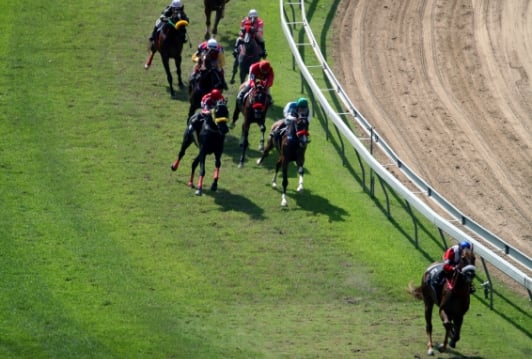Sitting in long-term Treasury bonds earning 1.5% seems rather pointless when there are solid large-cap stocks paying dividends in the 3% range.
“In a slow-growth environment like this, that's when the higher-quality companies tend to outperform,” said Mark Trautman, co-manager of the AMF Large Cap Equity Fund Ticker:(IICAX).
“Dividends are the most appealing part of the market right now,” he said. “Bond yields can't go much lower from here, so what happens if the yields start moving up?”
Answer: Bond prices take a drubbing — and so do bond investors.
Mr. Trautman has managed the fund along with John McCabe since 1992, but the fund's history dates back to the early 1950s when it was essentially a portfolio of bank balance sheet assets.
In the 1960s, access to the fund was extended to the banking network's employees. It wasn't until the mid-1990s that the fund was finally made available to retail investors in all 50 states. The fund only recently dropped the minimum investment requirement to $2,500 from $10,000.
That all helps explain why a fund that's been around for almost 60 years has less that $90 million under management, but it also helps illustrate that asset levels alone shouldn't be an automatic screen.
The strategy, which holds less than three dozen stocks and has an annual turnover rate of around 10%, is nothing if not deliberate. Mr. Trautman admits that sometimes his biggest challenge is navigating the embedded capital gains that come from holding positions for so long.
For example, when he took over management of the portfolio, he discovered shares of Walt Disney Co. Ticker:(DIS) that had been purchased decades earlier and had a cost basis of 25 cents.
“We sold that Walt Disney stock in 2000 at around $40 a share when it was trading at 59 times earnings,” he said. He bought the stock back last year when it was trading at $35 a share and the price-to-earnings ratio was at a more reasonable level of 14.
Disney's stock is currently trading at more than $47 a share, up 26% from the start of the year, with a P/E of 17.
“We want to own high-quality companies, but we don't want to own them at just any price,” Mr. Trautman said. “P/E multiples have really compressed, and today you can find some high-quality companies at 11- to 13-times earnings.”
A dozen of the 30 stocks in the fund have been in the portfolio for at least a decade and, not surprisingly, the portfolio is loaded with large-caps.
The fund's two smallest holdings (by market capitalization) are Becton Dickinson & Co. Ticker:(BDX) and Sysco Corp. Ticker:(SYY), which have market caps of $15 billion and $17 billion, respectively.
On the other end of the spectrum, there is Exxon Mobil Corp. Ticker:(XOM), which has a $390 billion market cap. “We're comfortable with a concentrated portfolio because of the quality metrics we're using,” Mr. Trautman said.
The fund, which has displayed about 80% of the volatility of the S&P 500, may not be the highest flier, but it has been dependable. Through the first half of the year, the fund was up 8.5%, compared with 9.5% for the S&P.
But last year, the fund was up 8.2%, while the S&P was up 2.1%.
More impressive yet: the relatively modest 28.6% decline in 2008, a year that saw the S&P fall by 37%.
Portfolio Manager Perspectives are regular interviews with some of the most respected and influential fund managers in the investment industry. For more information, please visit InvestmentNews.com/pmperspectives.







